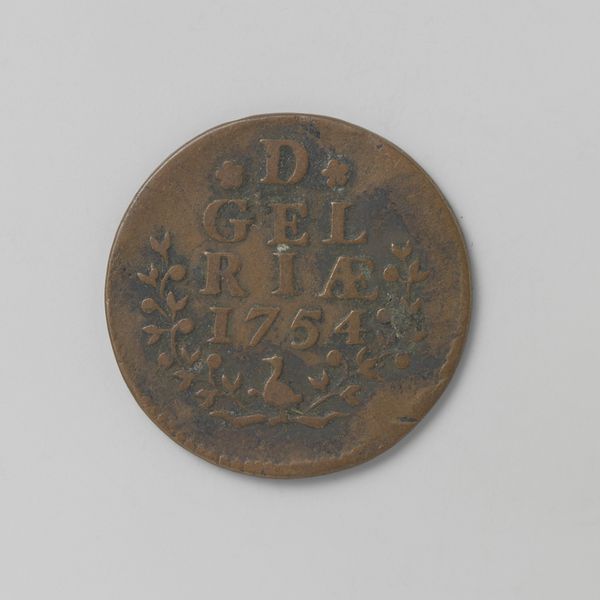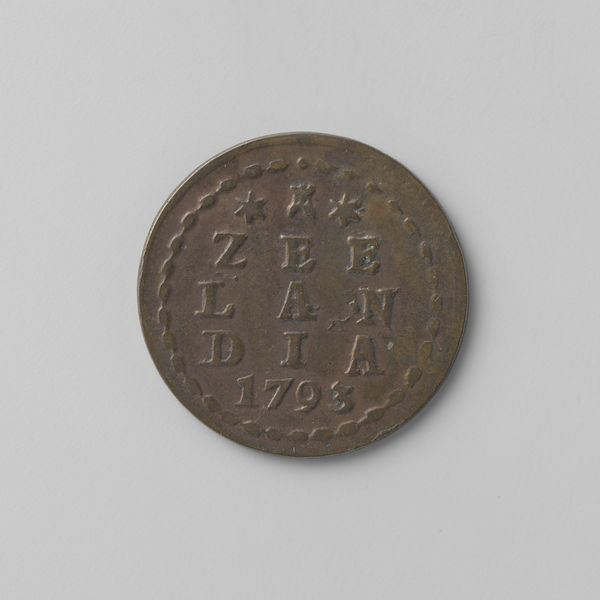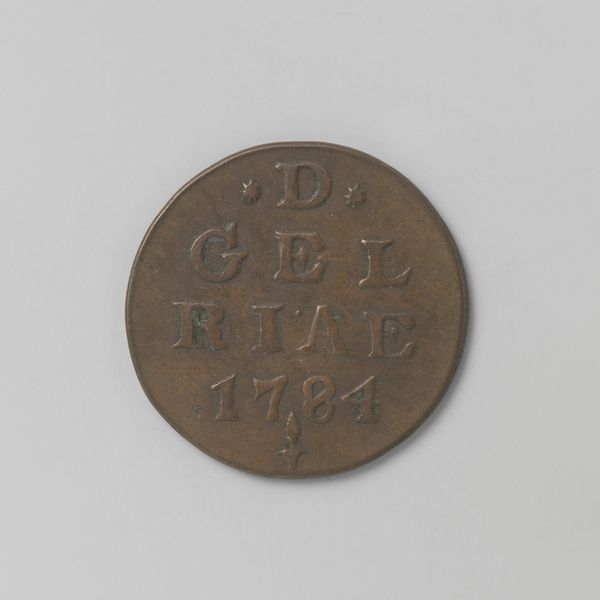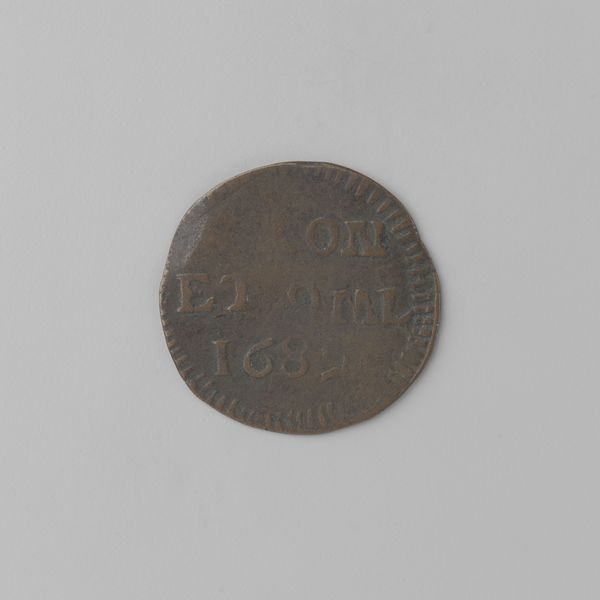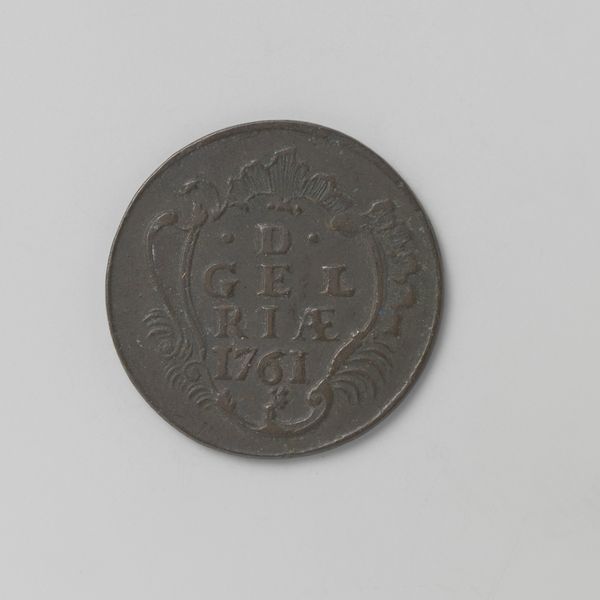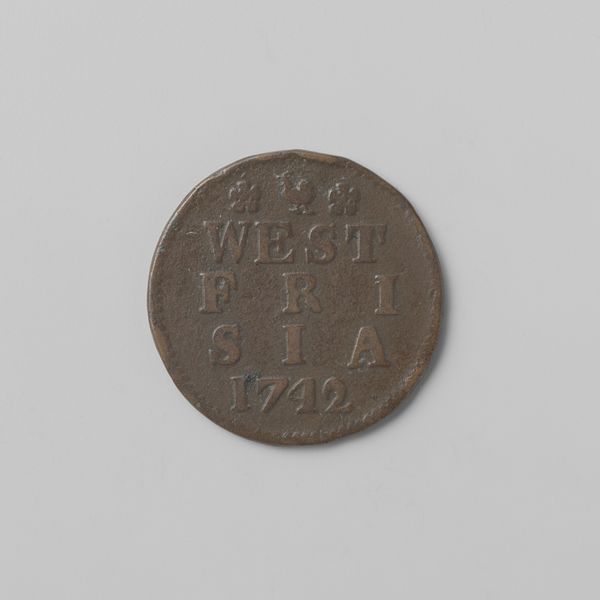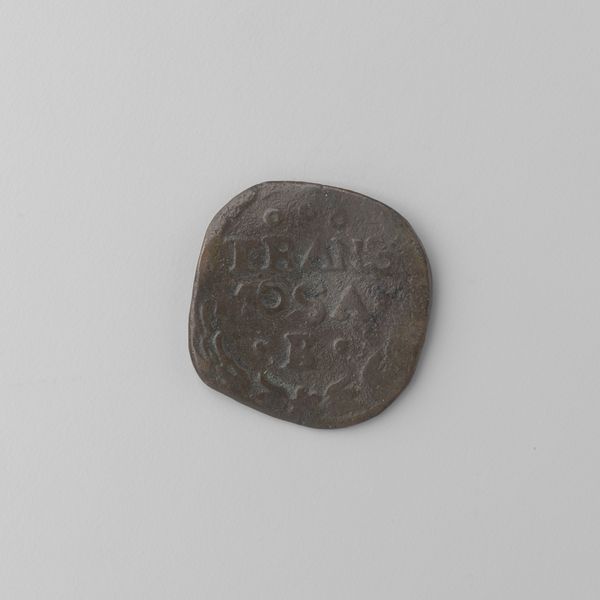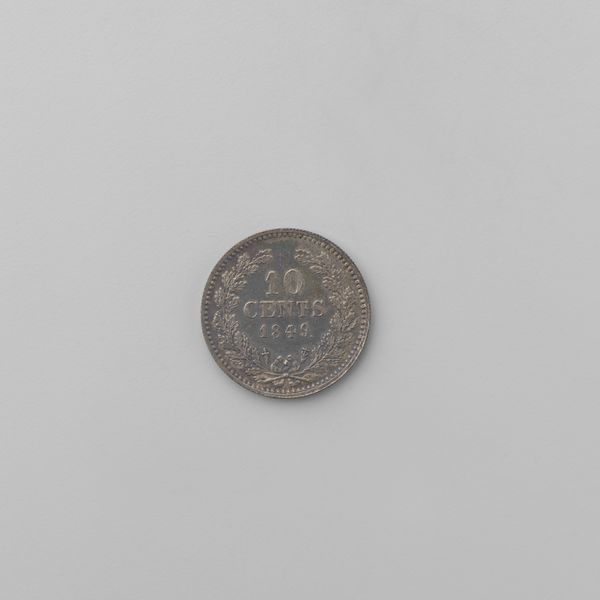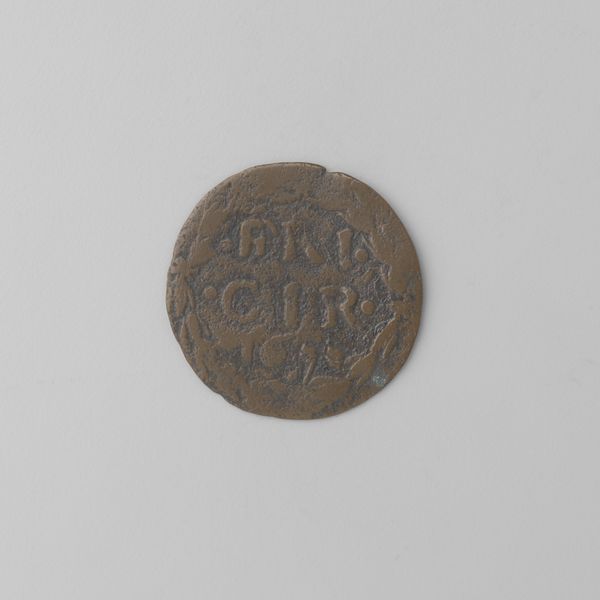
print, metal, engraving
# print
#
metal
#
geometric
#
ancient-mediterranean
#
history-painting
#
engraving
Dimensions: diameter 2.2 cm, weight 3.26 gr
Copyright: Rijks Museum: Open Domain
This is a 'Gelderse Duit', a coin made in the province of Gelderland in 1753. It’s made of copper, a relatively soft material, which allowed it to be die-struck with the details you see here. The very concept of coinage speaks volumes about the rise of capitalism. Instead of bartering for goods, communities began to rely on these small, portable units of value. This particular coin would have been one of thousands, perhaps millions, produced to facilitate trade, and the details on its surface indicate the state power that underpinned this system. Look closely, and you'll see the inscription 'GELRIA 1753'. The repetitive nature of coin production contrasts sharply with the unique nature of fine art, and yet both reflect the societies that produce them. By considering the material properties and the means of production, we can better understand the value we place on objects, whether they're considered art or simply a means of exchange.
Comments
No comments
Be the first to comment and join the conversation on the ultimate creative platform.
